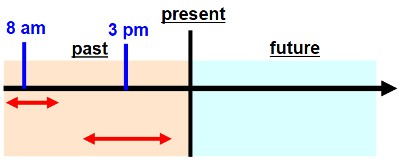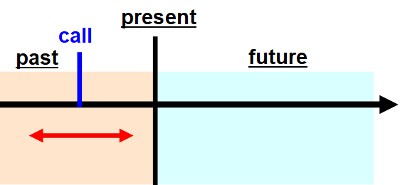Let’s look at an example of the past continuous tense in context:
I was walking to the train station when you called me.
(The text in bold is the past continuous tense.)

In this English grammar lesson, you will learn:
- the form of the past continuous
- the meaning and common uses
Form
Affirmative form
subject + past form of the verb “to be” + ING form
| I was walking |
| you were walking |
| he was walking |
| she was walking |
| it was walking |
| we were walking |
| you were walking |
| they were walking |
Negative form
Full form:
subject + past form of the verb “to be” + “not” + ING form
Contracted form:
subject + past form of the verb “to be” + “n’t” + ING form
| negative full form | negative contracted form |
|---|---|
| I was not walking | I wasn’t walking |
| you were not walking | you weren’t walking |
| he was not walking | he wasn’t walking |
| she was not walking | she wasn’t walking |
| it was not walking | it wasn’t walking |
| we were not walking | we weren’t walking |
| you were not walking | you weren’t walking |
| they were not walking | they weren’t walking |
Question form
Past form of the verb “to be” + subject + ING form .. ?
| Was I walking…. ? |
| Were you walking…. ? |
| Was he walking…. ? |
| Was she walking…. ? |
| Was it walking…. ? |
| Were we walking…. ? |
| Were you walking…. ? |
| Were they walking…. ? |
Question form with “question words”
We can use several “question words” to form a question with the past continuous:
what
where
why + Past form of the verb “to be” + subject + ING form .. ?
who
how
Examples:
Why was he shouting?

What was he eating?
Where was she going?
ING form
The basic rule for regular verbs is to add –ing to the base form:
Examples:
clean > cleaning
walk > walking
For all the English grammar rules about the -ing form, see my other lesson: ing form
Uses and meaning of the past continuous
Long action in the past
We use the past continuous to describe a long action in the past that started before a specific time. The long action is continuing after the specific time.
Look at this time chart:

On the chart, in blue text, there are 2 specific times in the past: 8 am and 3 pm
At these specific times in the past there are long actions. The long actions are represented on the above time chart by the 2 red arrows.
The important thing to understand with the past continuous tense is that it describes an action that takes place over a period of time or duration.
Examples:
Yesterday at 8am, I was eating breakfast.
(At 8 am, I was in the process of eating breakfast. I don’t specify when I started or finished the breakfast. All we know is that I was in the middle of the continuous action of eating breakfast at 8 am)

At 3 pm, Mark was working.
(At 3pm, Mark was in the process of working. We don’t specify when he started or finished working. All we know is that he was in the middle of the continuous action of working at 3 pm)
Interrupted long action in the past
We use the past continuous to describe a long action in the past that is interrupted by a short action. We use the past simple for the short action that interrupts it.
Look at this time chart:

The red line represents the long action (past continuous)
The blue line represents the short action that interrupts the long action (past simple)
We have 2 choices of structure to express this:
Choice 1:
when + past simple
Example:
I was walking to the train station when you called me.
Or we change the order:
When you called me, I was walking to the train station.
If the “when clause” comes first, we separate it from the long action with a comma (,)
Choice 2:
while + past continuous
Example:
While I was walking to the train station, you called me.
If the “while clause” comes first, we separate it from the short action with a comma (,)
or we change the order:
You called me while I was walking to the train station.
Summary:
Use “while” before the past continuous
Use “when” before the past simple
Set the scene in a story
We use the past continuous to set (describe) the scene in a story before the real action starts. We use the past simple for the real action. We often see this in books, newspapers, magazines.
Example:
Superman was walking in the park. A family was playing football and dogs were barking. Suddenly a man ran towards him ……
Annoying habits in the past
We use the past continuous with “always” to describe annoying habits or annoying repeated actions in the past. We write “always” after the auxiliary verb “to be” and the main verb in the ING form.
Examples:
Nobody liked the manager. He was always shouting.
David was always smoking.
Several actions at the same time
We use the past continuous to describe actions that happen at the same time. Again, we use “while” before the past continuous.
Examples:
Clare was painting while I was cooking dinner.
While Mark was washing the car, Jane was reading.
More English lessons
Past perfect tense – English grammar
The present continuous tense in English
Past simple tense in English
Private online English lessons
3 ways to use the word BUSY

